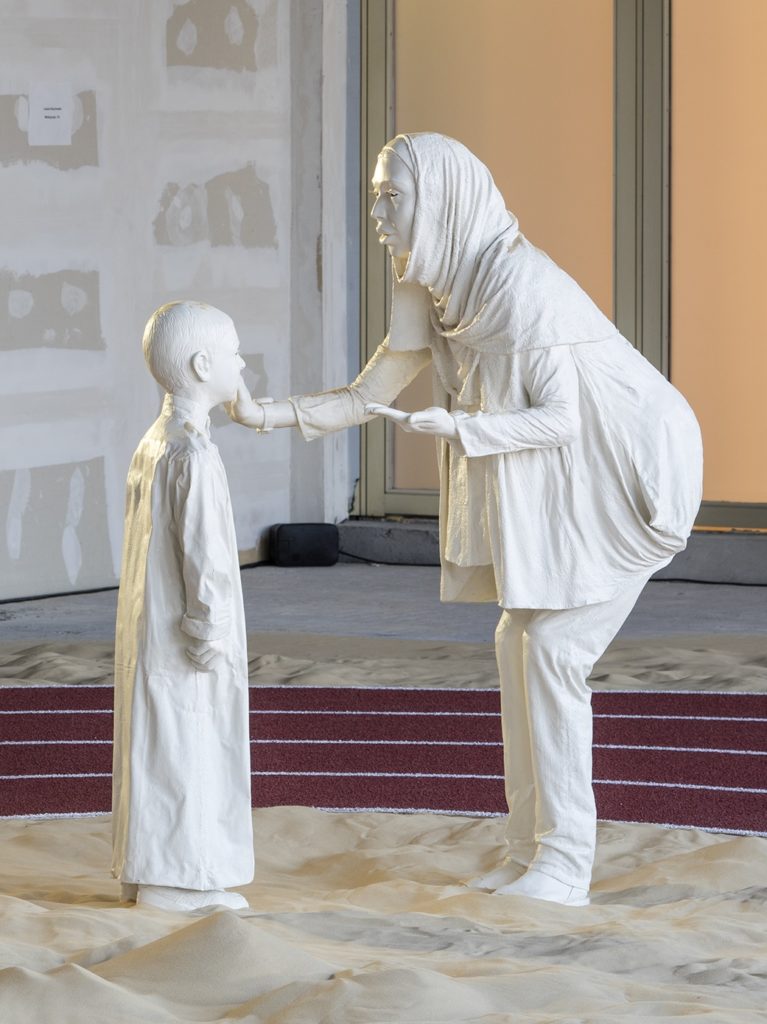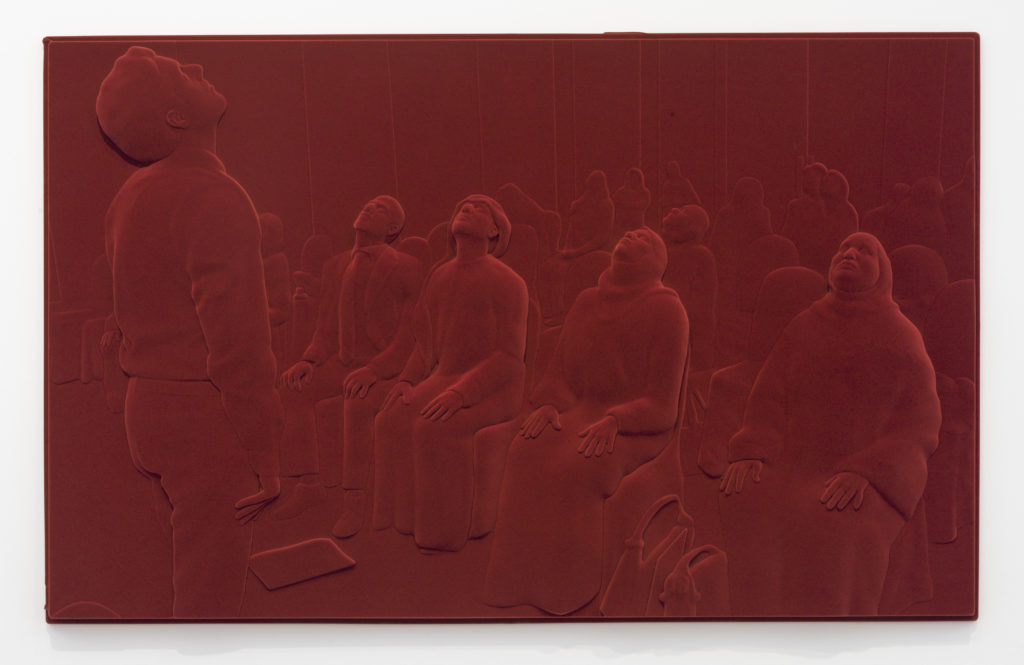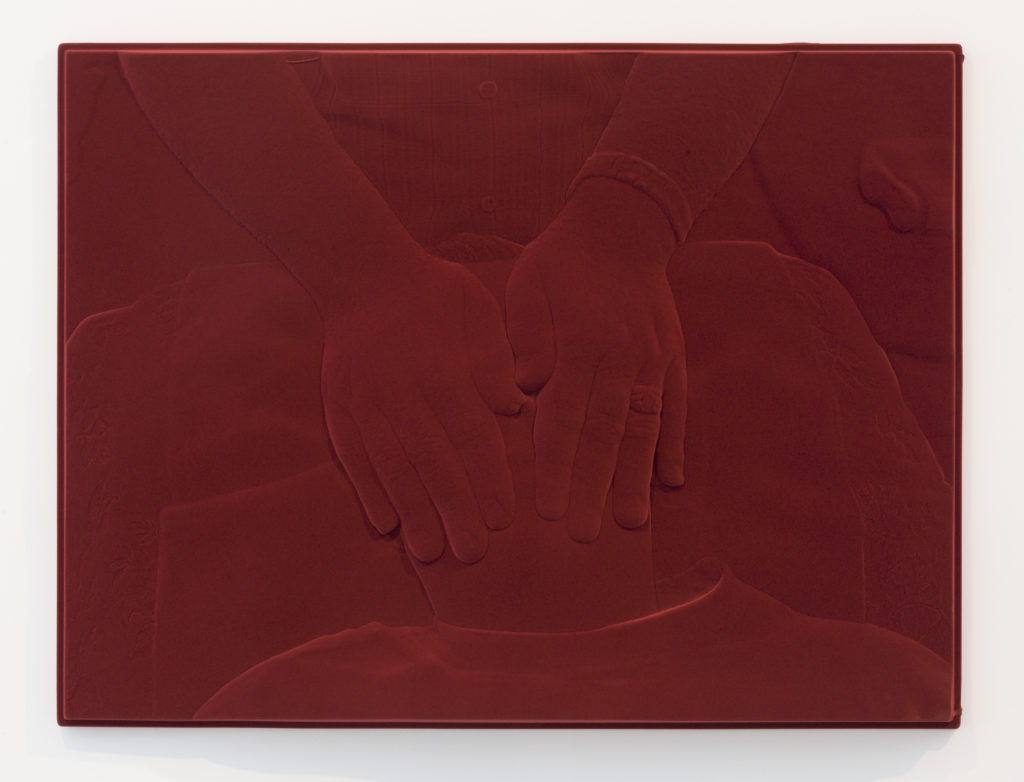On View
Witness the Unsettling Power of GCC’s Positive Thinking
Happiness is all the rage this fall.

Happiness is all the rage this fall.

Brian Boucher

Advertisers have long known that intangibles like security and serenity can be used to market goods and services to a wide swath of the population. What happens when these capitalist techniques are imported into the Middle East?
A new exhibition by Persian Gulf-based collective GCC digs into the ways that, as they see it, the rulers of their home countries exploit such techniques for their own purposes.
“The idea of happiness is insidiously used to quell dissent,” GCC member Fatima Al Qadiri told me on the exhibition’s opening day on Thursday, at New York’s Mitchell-Innes & Nash. According to the party line among the powers that be, if you’re unhappy, never mind actual social problems, she said: “You’re just not being positive!”
In an era when the nations of Bhutan and India as well as, very recently, the United Arab Emirates have established ministries of happiness, healing techniques like Feng Shui and acupuncture, which would previously have been seen as heretical in their home region, are now being embraced in the Middle East, albeit uneasily, say GCC’s members. The figural sculptures in the new show explore the way these various forces play out on the human body.

GCC, Gestures V (2016). Courtesy Mitchell-Innes & Nash.
Named for the Gulf Cooperation Council, an intergovernmental organization of six wealthy Middle Eastern monarchies, this self-described “delegation” of eight artists—Nanu Al-Hamad, Khalid Al Gharaballi, Abdullah Al-Mutairi, Fatima Al Qadiri, Monira Al Qadiri, Aziz Al Qatami, Barrak Alzaid, and Amal Khalaf—was formed, they say, in the VIP lounge of Art Dubai in 2013. (Sophia Al Maria, a founding member, isn’t currently involved.) This origin myth, taking place in a Western-style art fair, nicely sums up the, as it were, “Middle East meets West” phenomena that many see in the collective’s output.
The group gained widespread notice in the West just a year after its founding, with the 2014 exhibition “GCC: Achievements in Retrospective,” at New York’s MoMA PS1. The new show, “Positive Pathways (+),” follows an attention-getting outing at the most recent Berlin Biennale.
The centerpiece of the show (a version of the group’s contribution to the Berlin exhibition) is a life-size, ivory-hued sculpture of a mother and a small child; she bends over him as she performs “Quantum Touch,” a New Age, no-contact healing exercise that, as Alzaid described it, aims to channel the energies in the body—and the universe—to heal.” A recording of a voice reading an edited address by a regional ruler plays softly.
There is abundant need of healing, say the artists, in an autocratically-ruled region where rapid change, including the growth of mall culture and other rampant real estate development, has unsettled longstanding ways of life.
“We’re watching traditionally minded people absorb new cultural phenomena,” said one of the artists during the walkthrough, in which the stylish group members enthusiastically finished one another’s sentences. They cheerfully intoned, and sometimes seemingly coined on the spot, expressions like “heritage engineering” and “post-dystopia.”
The “intensely depressing” physical reality of the artists’ home environment, as one of the artists described it, intrudes on the mother-and-child pair in the form of an abundance of dust and sand that seems to have rained down on them. “We’re at war with sand!” Fatima told me. “They constantly try to remove it from the buildings, and from the red carpets at the airport runways, in a comical battle, because the sand is just so anti-prestige.”
A tiny racing-style track, deep red with white lane markings, surrounds the pair. That motif recalls public walking tracks that have sprung up in the desert, say the artists, to encourage people to walk for their health in an increasingly sedentary car culture. But that cheerful, civic-minded gesture here becomes a kind of prison, as the tight red-and-white circle seems to bind the pair to their places.

GCC, Gestures IV (2016). Courtesy Mitchell-Innes & Nash.
A group of wall-hung relief sculptures, coated in burgundy velveteen, reproduces images of various kinds of healers that the group found online, often in social media posts advertising their services. In one, a man lays hands on the head of a client; in another, a group of robed participants looks skyward in a pose that’s said to induce feelings of well-being.
It’s not lost on the artists that the uncanny clash between old and new, autocratic and democratic, is taking place nearby to the horrific civil war in Syria and the resulting global refugee crisis. There’s a reason that even the cheery imagery of healing in this show is the color of blood.
GCC’s “Positive Pathways (+)” is on view at Mitchell-Innes & Nash through November 23.